|
How to connect contents of AV archives?
Exhibition, Lectures, Screenings, Workshop
October 12 - 15 2010
Vžigalica Gallery, Trg Francoske revolucije 7, Ljubljana
Project Room SCCA, Metelkova 6, Ljubljana
Documentation and archiving of media art materials has become necessary for the reflection of contemporary art practice and media art. The seminar How to connect the contents of AV archives? consists of exhibition (installation and video works by Dalibor Martinis Data Recovery, video archive jukebox Transitland), lectures (Steven Kovats and Dalibor Martinis), screenings from archives Netherlands Media Art Institute from Amsterdam and DIVA Station and workshop on digitization of archival contents.
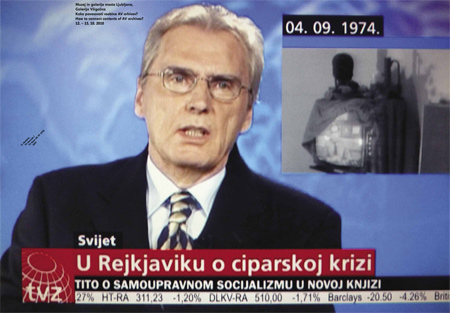
- Program
- Exhibition
- Lectures
- Screenings
- Workshop
- Gallery
- Press Clipping
- Colophon
1. PROGRAM
Tuesday, 12th October
- Lecture at 6pm
Stephen Kovats: Under the Radar: Deciphering Cultural Process
- Exhibition opening at 8pm
Dalibor Martinis: Data Recovery 1974–2009, installation and videoworks
Transitland. Video art from Central and Eastern Europe 1989–2009, video archive jukebox
The exhibition will be on view until Friday, 15th October.
Wednesday, 13th October
- Lecture at 6pm
Dalibor Martinis:Data Recovery 1974–2009
Thursday, 14th October
- Screening at 6pm
Wiel’s Choice from NIMk
(selection by Wiel Seuskens from Netherlands Media Art Institute Montevideo/Time Based Art, Amsterdam)
Friday, 15th October
- Screening at 6pm
Random Tape Destruction (random selection from DIVA Station)
WORKSHOP:
- Friday, 15th October, 10am-6pm
- Saturday, 16th October, 10am-2pm
- Project Room SCCA, Metelkova 6, Ljubljana
Questions of video formats?
2. EXHIBITION
- Transitland. Video art from Central and Eastern Europe 1989–2009, video arhiv/jukebox
Transitland is an archive of 100 video works from "new" European countries and is an attempt to present a history from within.The works were selected by a jury of external experts and co-organizers. The output includes archive jukeboxes and thematic compilations that travel to different venues in Europe, a website and online version of the archive for international access, a print publication and DVD compilation of the commissioned videos, and a combination of screenings and discursive events in Bulgaria, Hungary, Germany and associated partners’ locations.
There were more than 350 works nominated, by 40 curators, art critics, filmmakers, and artists. The jury watched all the works that had been received over a 4 day period. The jury members were Edit Andras (art theoretician, Hungary), Dunja Blažević (art historian and director of Center of Contemporary Art, Sarajevo), Stephen Kovats (director of transmediale, Berlin), Olga Shishko (director of MediaForum, Moscow) and Kathy Rae Huffman (independent curator, Berlin). The group of five had the task to select 100 works for inclusion in the archive. The discussions were intense, but finally decisions were made for the following reasons, to create a program that is inclusive and to represent the various positions and issues from 25 post-communist countries:
- Balkans: Albania, Bulgaria, Bosnia/Herzegovina, Croatia, Kosova, Macedonia, Montenegro, Romania, Serbia, Slovenia;
- The Baltic States: Lithuania, Latvia, Estonia;
- Former USSR: Armenia, Azerbajan, Belarus, Georgia, Moldova, Russia, Ukraine;
- Central Europe: Germany (especially GDR), Czech Republic, Slovakia, Hungary, Poland.
Transitland is a collaborative project organized by InterSpace (Sofia), transmediale (Berlin), Ludwig Musuem (Budapest) and associated partners D Media (Cluj), Videoaktiv and Colegium Hungaricum (Berlin). Transitland aims to create a video archive of 100 works spanning 20 years, starting from the fall of the Berlin wall. Since much of the history of the “new” European countries is being represented from the outside, this is an attempt to present a history from within.
http://transitland.eu

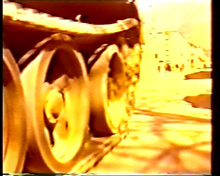
Gentian Shkurti: Alice in Wonderland, 1997, Albania
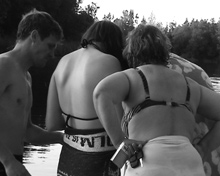
Eléonore de Montesquiou: Naine, 2009, Estonia
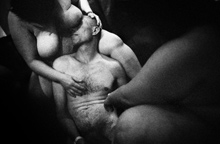
Simon Chang: Praha Erotica, 2009 Czech Republic
- Dalibor Martinis: Data Recovery 1974–2009,
Artworks:
- Artist at Work, 1980–2010
- TV News, 4. 9. 1974, 2009
- D. M. talks to D. M., 1978–2010
- JBT-VII-58, 2007
- Eternal Flame of Rage (Ljubljana 2007, Zagreb 2008, Subotica 2009)
Data recovery is a procedure of partial recovery of lost data from memory without the context which, before the loss has occurred, gave the positive informational, social, or other meaning. As with the loss of data from a computer disk that can sometimes be partially retrieved, this process is an attempt to bring back fragments of events, situations and circumstances which disappeared in our general memory loss. Any subsequent interpretation and historisation would in this case be just a manipulation of the suppressed reality.
All the exhibited works are based on the artist’s personal memory on the events that happened during his life time.
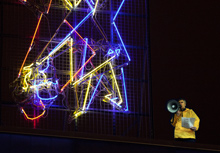
Dalibor Martinis: Artist at Work, 1980-2010
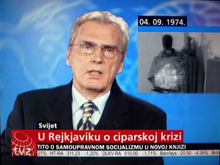
Dalibor Martinis: TV News, 4. 9. 1974, 2009
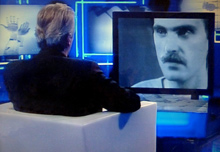
Dalibor Martinis: D. M. talks to D. M., 1978-2010
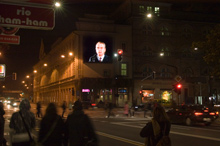
Dalibor Martinis: JBT-VII-58, 2007
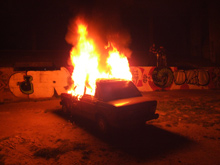
Dalibor Martinis: Eternal Flame of Rage, Subotica 2009
The exhibition will be on view until Friday, 15th October.
 |
3. LECTURES
- Stephen Kovats: Under the Radar: Deciphering Cultural Process
All forms of archiving involve a process of cultural instability - creating a narrative of acts, memories, textures, experience and projecting these into contexts which will yet again alter the work's unique time and space. How to capture not only the physical presence of a giving work but its cultural essence within which the work was created?
Whether this is a social/political moment of intersection in the work's reception or the structural and technical fabric of the art work, archiving - particularly for process, non-linear code-based and interactive works - methodologies vary enormously, there is no universal consensus, no cultural operating system to read the archive. Festivals, for example, act to delineate cultural trajectories often leaving cacophonic archival trajectories behind them that represent yet another fusion of space/time functions with artistic expression. Within the examples to be presented: Transitland, Ostranenie and Transmediale unique cultural, societal and artistic trajectories will be discussed - as a starting point which may lead to more comprehensive meaning relative and relevant to the individual works themselves.
 Stephen Kovats, initiator, designer and director of international projects, symposia, exhibitions and academic programs in the fields of media culture and mobility, architecture and urbanism, currently director of Germany's foremost event for art and digital culture - transmediale. Previously active as chief curator and media arts researcher at V2_Institute for the Unstable Media, Rotterdam, with projects in Europe and North America as a media arts researcher, curator, spatial designer and artistic project conceptualist at the Bauhaus Dessau Foundation, Germany. As founder of the Electronic Media Interpretation Studio and director of the "Ostranenie" Electronic Media Forum he was profoundly engaged in examining and actively developing the role played by electronic art and media upon the societal transformation process in Central and Eastern Europe, as well as more recent projects engaging China and regions of structural development. Stephen Kovats, initiator, designer and director of international projects, symposia, exhibitions and academic programs in the fields of media culture and mobility, architecture and urbanism, currently director of Germany's foremost event for art and digital culture - transmediale. Previously active as chief curator and media arts researcher at V2_Institute for the Unstable Media, Rotterdam, with projects in Europe and North America as a media arts researcher, curator, spatial designer and artistic project conceptualist at the Bauhaus Dessau Foundation, Germany. As founder of the Electronic Media Interpretation Studio and director of the "Ostranenie" Electronic Media Forum he was profoundly engaged in examining and actively developing the role played by electronic art and media upon the societal transformation process in Central and Eastern Europe, as well as more recent projects engaging China and regions of structural development.
- Dalibor Martinis: Data Recovery 1974–2009
Data recovery is a procedure of partial recovery of lost data from the memory without the context which, before the loss occurred, gave the positive informational, social, or other meaning. By emulating this process we want to bring back the fragments of events, actions or situations which disappeared in our general memory loss.
Let us quote Rancière's motto: "We choose the present instead of historicization, mareriality of the process instead interpretation." In doing that we hold to three principles: 1) Configuration instead of confabulation; 2) The present instead of historicization and 3) Diachronical principle instead of chronology.
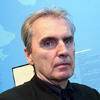 Dalibor Martinis, born in Zagreb in 1947, graduated from the Academy of Fine Arts in Zagreb and has been exhibiting since 1969. From 1984 to 1991, he taught video in the Department of Film and Television at Zagreb's Academy of Dramatic Arts; he was also a visiting lecturer at the Ontario college of Art in Toronto in 1991-1992. He has held fellowships in Canada (1978 and 1990), Japan (1984), and the United States (1994). He lives and works in Zagreb. Dalibor Martinis, born in Zagreb in 1947, graduated from the Academy of Fine Arts in Zagreb and has been exhibiting since 1969. From 1984 to 1991, he taught video in the Department of Film and Television at Zagreb's Academy of Dramatic Arts; he was also a visiting lecturer at the Ontario college of Art in Toronto in 1991-1992. He has held fellowships in Canada (1978 and 1990), Japan (1984), and the United States (1994). He lives and works in Zagreb.
 |
4. SCREENINGS
Thursday, 14th October, at 6 pm
- Wiel’s Choice from NIMk (selection by Wiel Seuskens from Netherlands Media Art Institute Montevideo/Time Based Art, Amsterdam)
Netherlands Media Art Institute Montevideo (NIMk)/Time Based Art and DIVA Station are members of GAMA (Gateway to Archives of Media Art) international internet platform, which brings together European video/media archives to make them more visible and easily accessible.
Collaboration amongst NIMk and DIVA Station is continuous, starting in 2007 with the seminar What is Going on Concerning Audiovisual Archives? For this occasion, Wiel Seuskens, head of the technical department at NIMk, prepared a selection from NIMk's archive.
Works:
- Arno Coenen & Peter Leeuwerink, VOC/VIP: Holland Experience!
(2007 High End Edition), 2007, 13'40
- Woody Vasulka, Reminiscence, 1974, 4'53
- Arnulf Rainer, Mouth Piece, 1975, 6'52
- Erwin Olaf, Spanking Clowns, 2000, 3'20
- Broersen & Lukács, Crossing the Rainbow Bridge (single-channel version), 2003, 14'40
- Jeroen Kooymans, Pilot, 1998, 1'50
- eddie d, Poem 9, 1998, 0'50
- eddie d, Sonatina, 2004, 2'09
- Martijn Veldhoen, Momentum, 2009, 6'01
- Jan van Nuenen, Warning, Petroleum Pipeline, 2004, 4'50

Friday, 15th October, at 6 pm
- Random Tape Destruction (random selection from DIVA Station)
Unbiased selection from DIVA Station archive was made with random footages of videos longer than five and shorter than twenty minutes. The index numbers of the preview DVD covers were shot with a video camera on miniDV that was later randomly mechanically damaged. The deformation of the tape marked the work that was selected. Density of information and nontransparent magnetic tape prevented any bias choice.
DIVA Station is a platform for preservation, research, presentation, and dissemination of video & media art, which has been developed on the basis of SCCA projects Videodokument, Videospotting, Internet Portfolio, Artservis Collection and e-archive. DIVA Station is a partner of GAMA (Gateway to Archives of Media Art) international internet platform, which brings together European video/media archives to make them more visible and easily accessible. (www.e-arhiv.org/diva)
5. WORKSHOP
Friday, 15th October, 10am-6pm, and Saturday, 16th October, 10am-2pm
Project Room SCCA, Metelkova 6, Ljubljana
Questions of video formats?
Mentors Wiel Seuskens (Head of the technical department, NIMk, Amsterdam) and artist Neven Korda will conduct workshop about digitization of AV archival contents.
Mentors:
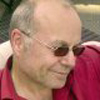 Wiel Seuskens studied Image and Media Technology at the Art Academy Utrecht. He has worked at various internet firms, specializing in live content and payment systems, and as teacher in computer graphics at the Art Academy Utrecht. He was also connected with art collective PARK 4DTV as a member of the editorial board and art programmer. Presently he is head of the technical department at the Netherlands Media Art Institute. The main occupation now is the digital preservation and distribution of the video collections of 15 art institutes in the Netherlands. Besides that, he is counselor and creator for various firms, concerning the use of media for internet, education, television and public screens. Wiel Seuskens studied Image and Media Technology at the Art Academy Utrecht. He has worked at various internet firms, specializing in live content and payment systems, and as teacher in computer graphics at the Art Academy Utrecht. He was also connected with art collective PARK 4DTV as a member of the editorial board and art programmer. Presently he is head of the technical department at the Netherlands Media Art Institute. The main occupation now is the digital preservation and distribution of the video collections of 15 art institutes in the Netherlands. Besides that, he is counselor and creator for various firms, concerning the use of media for internet, education, television and public screens.
(www.nimk.nl/)
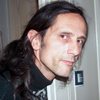 Neven Korda is an artist who operates in the field of performative and projected arts. He is also a director and author of theatre performances, films d'auteur, documentaries, and video clips. As a mentor he conducts various workshops on applicable video. His activities cover also the area of archiving and conservation of video recordings. Neven Korda is an artist who operates in the field of performative and projected arts. He is also a director and author of theatre performances, films d'auteur, documentaries, and video clips. As a mentor he conducts various workshops on applicable video. His activities cover also the area of archiving and conservation of video recordings.
More information: info@scca-ljubljana.si.
Workshop by Wiel Seuskens from the Netherlands is part of the Bilateral Fokus The Netherlands-Slovenia 2010.

6. GALLERY
(foto: SCCA-Ljubljana archive, Andrej Pezelj)
6.1. Exhibition view
Transitland. Video art from Central and Eastern Europe 1989–2009, video archive jukebox
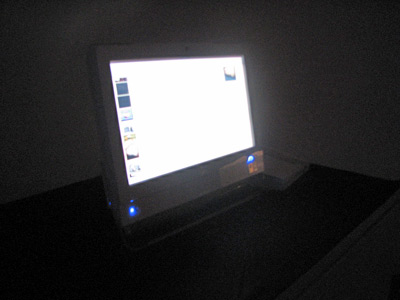
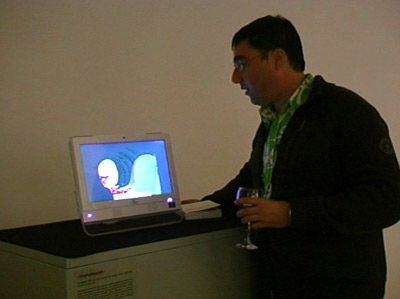
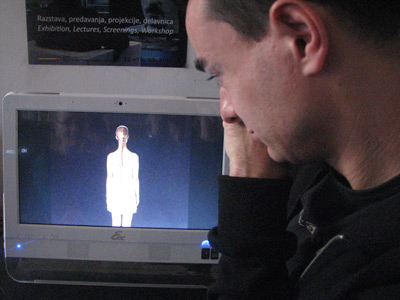
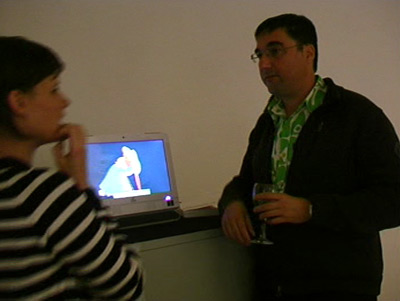
Dalibor Martinis: Data Recovery 1974–2009, installation and videoworks
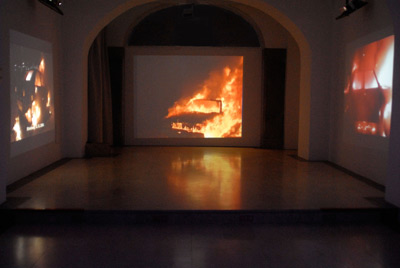
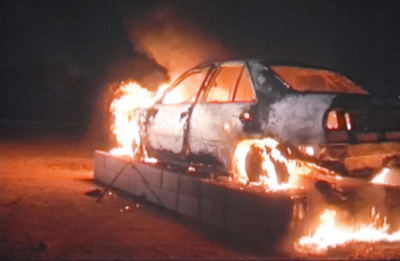
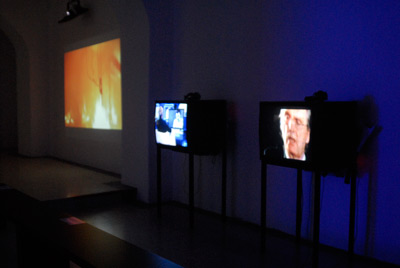
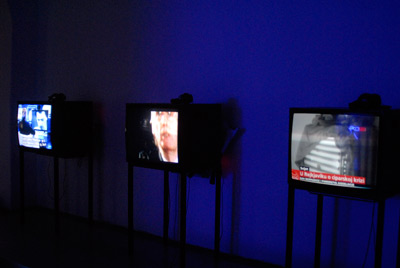
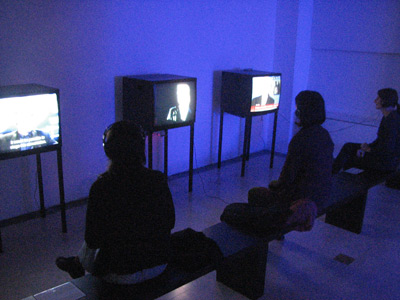
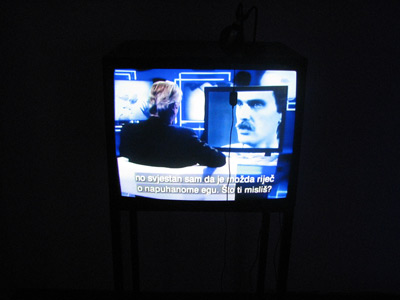
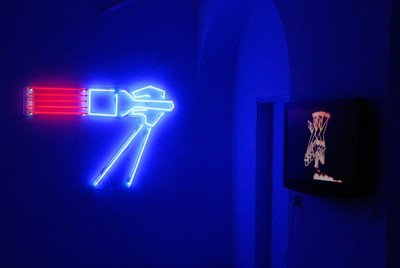
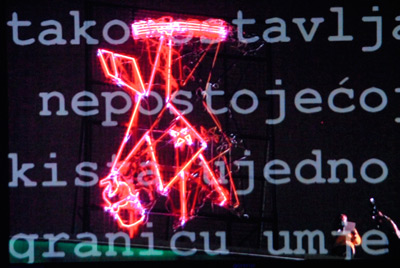
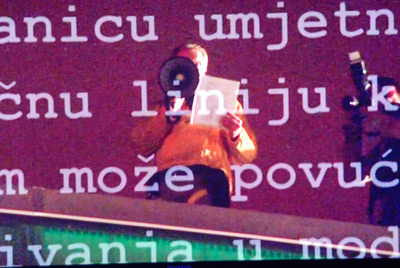
6.2. Lectures
Stephen Kovats: Under the Radar: Deciphering Cultural Process
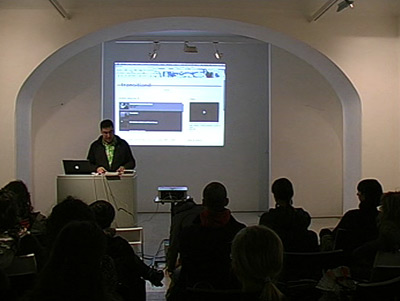
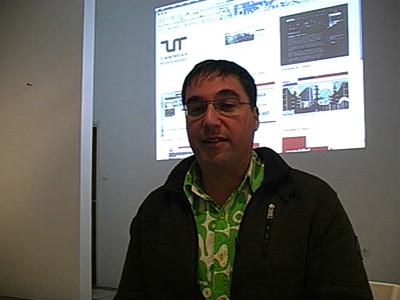
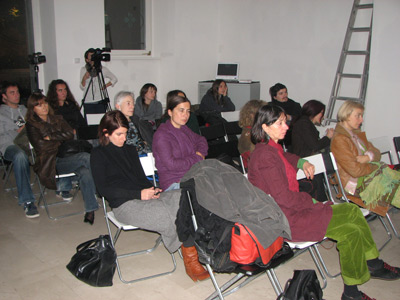
Dalibor Martinis: Data Recovery 1974–2009
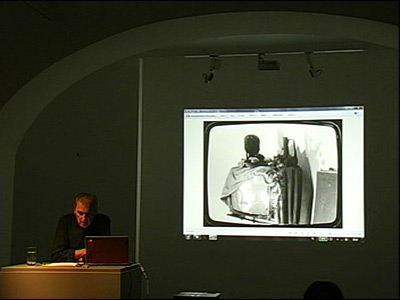
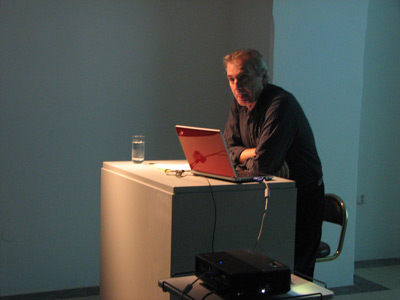
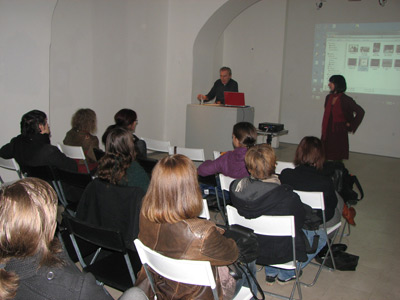
6.3. Screenings
Wiel’s Choice from NIMk
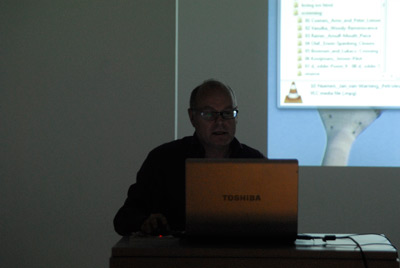
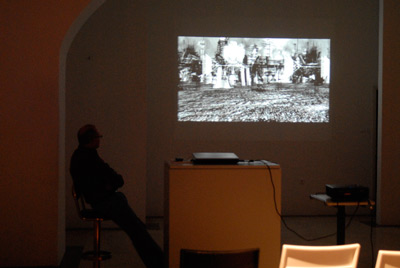
Random Tape Destruction (random selection from DIVA Station)
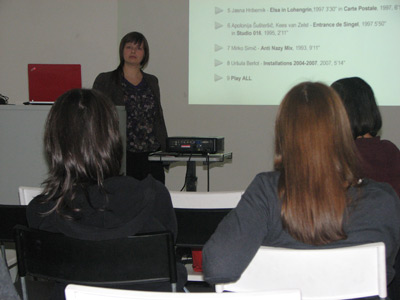
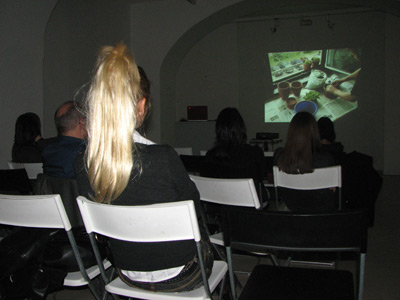
6.4. Workshop
Questions of video formats? Mentors: Neven Korda, Wiel Seuskens
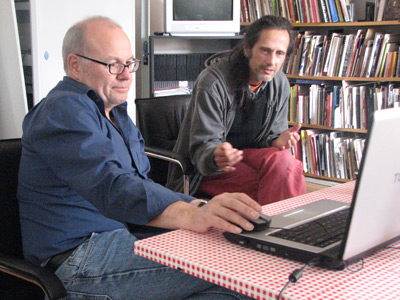
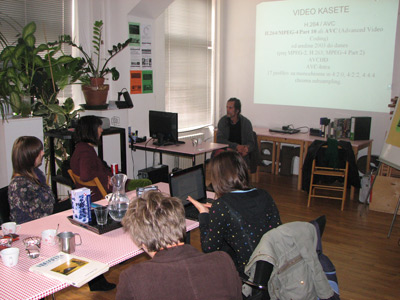
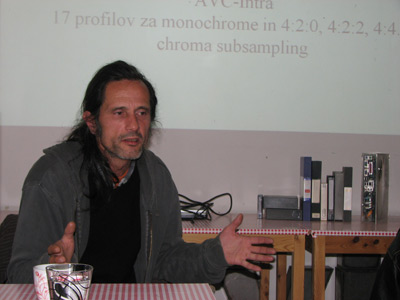
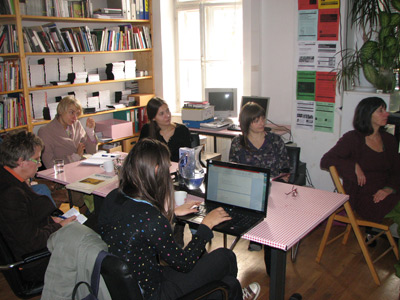
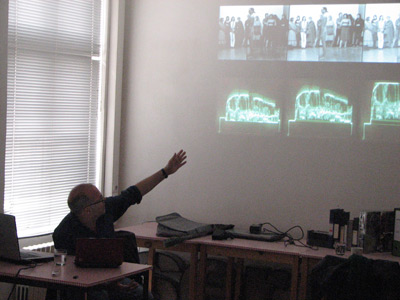
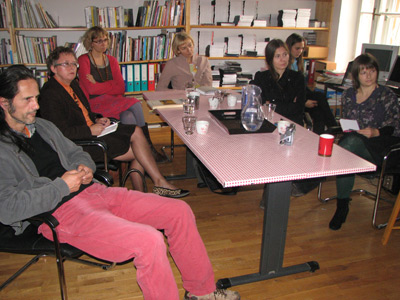
8. PRESS CLIPPING
- Kulturne novice / Cultural News (interview with Ida Hiršenfelder), Radio Student, October 12, 2010
- Polona Balantič, Kultura / Culture, TV Slovenia, Program 1, October 12, 2010
- Saška Rakef, Svet kulture / World of Culture, Radio Slovenia, Program 1, October 13, 2010 (interview with B. Borčić)
- Miha Colner, Kultura: Art-area, Radio Student, October 13, 2010 (interview with Stephen Kovats)
- Polona Balantič, Osmi dan / 8th Day, TV Slovenia, Program 1, October 18, 2010
- Saška Rakef, Petkov poudarek / Friday's Emphasis, Radio Slovenia, Program 1, October 29, 2010
8. COLOPHON
Concept and realization of the seminar: Barbara Borčić, Miha Colner, Dušan Dovč, Ida Hiršenfelder, Andrej Pezelj (DIVA Station)
Production: SCCA, Center for Contemporary Arts – Ljubljana, October 2010
Co-production: Museum & Galleries of Ljubljana, Gosposka ulica 15, 1000 Ljubljana; Vžigalica Gallery, Trg Francoske revolucije 7, 1000 Ljubljana, www.mestnimuzej.si
The project is supported by: City of Ljubljana, Ministry of Culture of Rep. of Slovenia
Acknowledgements: Netherlands Media Art Institute, Montevideo/Time Based Art, Collegium Hungaricum Berlin, Galerija Kapelica/Zavod K 6/4, Zavod Aksioma, Zavod Maska, Goethe-Institut Ljubljana, Embassy of the Kingdom of the Netherlands
[Published: October 10, 2010]
|

